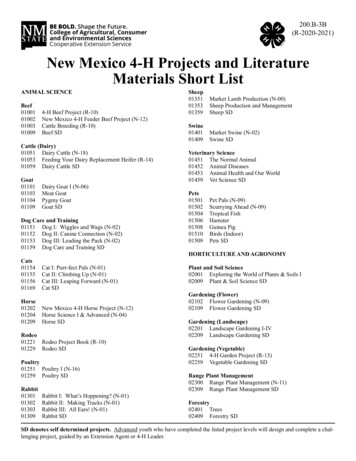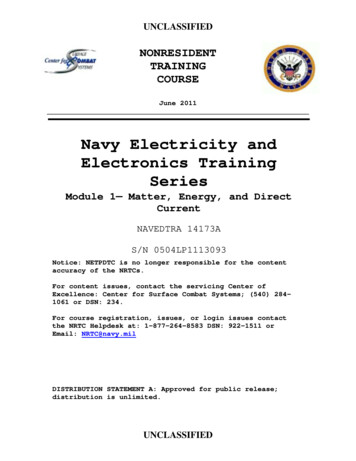
Transcription
UNCLASSIFIEDNONRESIDENTTRAININGCOURSEJune 2011Navy Electricity andElectronics TrainingSeriesModule 1— Matter, Energy, and DirectCurrentNAVEDTRA 14173AS/N 0504LP1113093Notice: NETPDTC is no longer responsible for the contentaccuracy of the NRTCs.For content issues, contact the servicing Center ofExcellence: Center for Surface Combat Systems; (540) 2841061 or DSN: 234.For course registration, issues, or login issues contactthe NRTC Helpdesk at: 1-877-264-8583 DSN: 922-1511 orEmail: NRTC@navy.milDISTRIBUTION STATEMENT A: Approved for public release;distribution is unlimited.UNCLASSIFIED
UNCLASSIFIEDAlthough the words “he,” “him,” and “his” areused sparingly in this course to enhancecommunication, they are not intended to begender driven or to affront or discriminateagainst anyone.DISTRIBUTION STATEMENT A: Approved for public release; distribution is unlimited.UNCLASSIFIED
UNCLASSIFIEDPREFACEBy enrolling in this self-study course, you have demonstrated a desire to improveyourself and the Navy. Remember, however, this self-study course is only one part of thetotal Navy training program. Practical experience, schools, selected reading, and yourdesire to succeed are also necessary to successfully round out a fully meaningful trainingprogram.THE COURSE: This self-study course is organized into subject matter areas, eachcontaining learning objectives to help you determine what you should learn along withtext and illustrations to help you understand the information. The subject matter reflectsday-to-day requirements and experiences of personnel in the rating or skill area. It alsoreflects guidance provided by Enlisted Community Managers (ECMs) and other seniorpersonnel, technical references, instructions, etc., and either the occupational or navalstandards, which are listed at https://www.netc.navy.mil then click on the Programs tab,then select the Nonresident Training Courses from the list.THE QUESTIONS: The questions that appear in this course are designed to help youunderstand the material in the text.VALUE: In completing this course, you will improve your military and professionalknowledge. Importantly, it can also help you study for the Navy-wide advancement inrate examination. If you are studying and discover a reference in the text to anotherpublication for further information, look it up.2011 EditionPublished byCenter for Surface Combat Systems (CSCS)NAVSUP Logistics Tracking Number0504-LP-111-3093iUNCLASSIFIED
UNCLASSIFIEDSailor’s Creed“I am a United States Sailor.I will support and defend theConstitution of the United States ofAmerica and I will obey the orders of thoseappointed over me.I represent the fighting spirit of the Navyand those who have gone before me todefend freedom and democracy around theworld.I proudly serve my country’s Navy combatteam with honor, courage and commitment.I am committed to excellence and the fairtreatment of all.”iiUNCLASSIFIED
UNCLASSIFIEDTABLE OF CONTENTSCHAPTERPAGE1 Matter, Energy, and Electricity.2 Batteries.3 Direct Current.1-12-13-1APPENDIXA Glossary.B Laws of Exponents.C Square and Square Roots.D Comparison of Units in Electric and Magnetic Circuits; andCarbon Resistor Size Comparison by Wattage Rating.E Useful Formulas for D.C. Circuits.Course Assignments follow Appendix EiiiUNCLASSIFIEDA-1B-1C-1D-1E-1
UNCLASSIFIEDNAVY ELECTRICITY AND ELECTRONICS TRAININGSERIESThe Navy Electricity and Electronics Training Series (NEETS) was developed for use bypersonnel in many electrical and electronic-related Navy ratings. Written by, and with theadvice of, senior technicians in these ratings, this series provides beginners withfundamental electrical and electronic concepts through self-study. The presentation ofthis series is not oriented to any specific rating structure, but is divided into modulescontaining related information organized into traditional paths of instruction.The series is designed to give small amounts of information that can be easily digestedbefore advancing further into the more complex material. For a student just becomingacquainted with electricity or electronics, it is highly recommended that the modules bestudied in their suggested sequence.Considerable emphasis has been placed on illustrations to provide a maximum amount ofinformation. In some instances, a knowledge of basic algebra may be required.Assignments are provided for each module, with the exceptions of Module 19, TheTechnician's Handbook. Course descriptions and ordering information may be found atwww.netc.navy.milThroughout the text of this course and while using technical manuals associated with theequipment you will be working on, you will find the below notations at the end of someparagraphs. The notations are used to emphasize that safety hazards exist and care mustbe taken or observed.WARNINGAN OPERATING PROCEDURE, PRACTICE, OR CONDITION, ETC., WHICH MAYRESULT IN INJURY OR DEATH IF NOT CAREFULLY OBSERVED ORFOLLOWED.CAUTIONAN OPERATING PROCEDURE, PRACTICE, OR CONDITION, ETC., WHICH MAYRESULT IN DAMAGE TO EQUIPMENT IF NOT CAREFULLY OBSERVED ORFOLLOWED.NOTEAn operating procedure, practice, or condition, etc., which is essential to emphasize.ivUNCLASSIFIED
UNCLASSIFIEDSTUDENT FEEDBACK AND QUESTIONSWe value your suggestions, questions, and criticisms on our courses. If you would like tocommunicate with us regarding this course, we encourage you, if possible, to use e-mailor to post your comments on the Community of Practice (COP) page located athttps://wwwa.nko.navy.mil/portal/home/. If you write or fax, please use a copy of theStudent Comment form that follows this page.For subject matter questions:E-mail: dlgr cscs pqs@navy.milPhone: Comm: 540-284-1061DSN: 234-1061Address:COMMANDING OFFICERCenter for Surface Combat Systems5395 First StDahlgren, VA 22448-5200vUNCLASSIFIED
UNCLASSIFIEDStudent CommentsCourse Title: NEETS Module 1-Matter, Energy, and Direct CurrentNAVEDTRA: 14173ADate:We need some information about you:Rate/Rank and Name: Command/Unit:Street Address: City: State/FPO: ZipYour comments, suggestions, etc.:Privacy Act Statement: Under authority of Title 5, USC 301, information regarding your military status isrequested in processing your comments and in preparing a reply. This information will not be divulgedwithout written authorization to anyone other than those within DOD for official use in determiningperformance.viUNCLASSIFIED
UNCLASSIFIEDThis page left intentionally blank.viiUNCLASSIFIED
NEETS Module1-Matter, Energy, and Direct CurrentUNCLASSIFIED1 MATTER, ENERGY, AND ELECTRICITYLEARNING OBJECTIVESLearning objectives are stated at the beginning of each chapter. These learning objectivesserve as a preview of the information you are expected to learn in the chapter. Thecomprehensive check questions are based on the objectives. By successfully completingthe NRTC, you indicate that you have met the objectives and have learned theinformation. The learning objectives are listed below.Upon completing this chapter, you will be able to:1. State the meanings of and the relationship between matter, element, nucleus,compound, molecule, mixture, atom, electron, proton, neutron, energy, valence,valence shell, and ion.2. State the meanings of and the relationship between kinetic energy, potential energy,photons, electron orbits, energy levels, and shells and subshells.3. State, in terms of valence, the differences between a conductor, an insulator, and asemiconductor, and list some materials which make the best conductors andinsulators.4. State the definition of static electricity and explain how static electricity is generated.5. State the meanings of retentivity, reluctance, permeability, ferromagnetism, naturalmagnet, and artificial magnet as used to describe magnetic materials.6. State the Weber and domain theories of magnetism and list six characteristics ofmagnetic lines of force (magnetic flux), including their relation to magneticinduction, shielding, shape, and storage.7. State, using the water analogy, how a difference of potential (a voltage or anelectromotive force) can exist. Convert volts to microvolts, to millivolts, and tokilovolts.8. List six methods for producing a voltage (emf) and state the operating principles ofand the uses for each method.9. State the meanings of electron current, random drift, directed drift, and ampere, andindicate the direction that an electric current flows.10. State the relationship of current to voltage and convert amperes to milliamperes andmicroamperes.11. State the definitions of and the terms and symbols for resistance and conductance, andhow the temperature, contents, length and cross-sectional area of a conductor affectits resistance and conductance values.12. List the physical and operating characteristics of and the symbols, ratings, and usesfor various types of resistors; use the color code to identify resistor values.1-1UNCLASSIFIED
NEETS Module1-Matter, Energy, and Direct CurrentUNCLASSIFIED1.1INTRODUCTIONThe origin of the modern technical and electronic Navy stretches back to the beginning ofnaval history, when the first navies were no more than small fleets of wooden ships,using wind-filled sails and manned oars. The need for technicians then was restricted to anavigator and semiskilled seamen who could handle the sails.As time passed, larger ships that carried more sail were built. These ships, encouragingexploration and commerce, helped to establish world trade routes. Soon strong navieswere needed to guard these sea lanes. Countries established their own navies to protecttheir citizens, commercial ships, and shipping lanes against pirates and warring nations.With the addition of mounted armament, gunners joined the ship’s company of skilled orsemiskilled technicians.The advent of the steam engine signaled the rise of an energy source more practical thaneither wind and sails or manpower. With this technological advancement, the need forcompetent operators and technicians increased.However, the big call for operators and technicians in the U.S. Navy came in the earlypart of the 20th century, when power sources, means of communication, modes ofdetection, and armaments moved with amazing rapidity toward involved technicaldevelopment. Electric motors and generators by then had become the most widely usedsources of power. Telephone systems were well established on board ship, and radio wasbeing used more and more to relay messages from ship to ship and from ship to shore.Listening devices were employed to detect submarines. Complex optical systems wereused to aim large naval rifles. Mines and torpedoes became highly developed, effectiveweapons, and airplanes joined the Navy team.During the years after World War I, the Navy became more electricity and electronicminded. It was recognized that a better system of communications was needed aboardeach ship, and between the ships, planes, submarines, and shore installations; and thatweaponry advances were needed to keep pace with worldwide developments in that field.This growing technology carried with it the awareness that an equally skilled force oftechnicians was needed for maintenance and service duties.World War II proved that all of the expense of providing equipment for the fleet and oftraining personnel to handle that equipment paid great dividends. The U. S. Navy had themodern equipment and highly trained personnel needed to defeat the powerful fleets ofthe enemy.1-2UNCLASSIFIED
NEETS Module1-Matter, Energy, and Direct CurrentUNCLASSIFIEDToday there is scarcely anyone on board a Navy ship who does not use electrical orelectronic equipment. This equipment is needed in systems of electric lighting and power,intercommunications, radio, radar, sonar, loran, remote metering, weapon aiming, andcertain types of mines and torpedoes. The Navy needs trained operators and techniciansin this challenging field of electronics and electricity. It is to achieve this end that thismodule, and others like it, is published.1.1.1Matter, Energy, and ElectricityIf there are roots to western science, they no doubt lie under the rubble that was onceancient Greece. With the exception of the Greeks, ancient people had little interest in thestructure of materials. They accepted a solid as being just that a continuous, uninterruptedsubstance. One Greek school of thought believed that if a piece of matter, such as copper,were subdivided, it could be done indefinitely and still only that material would be found.Others reasoned that there must be a limit to the number of subdivisions that could bemade and have the material still retain its original characteristics. They held fast to theidea that there must be a basic particle upon which all substances are built. Recentexperiments have revealed that there are, indeed, several basic particles, or buildingblocks within all substances.The following paragraphs explain how substances are classified as elements andcompounds, and are made up of molecules and atoms. This, then, will be a learningexperience about protons, electrons, valence, energy levels, and the physics of electricity.1.2MATTERMatter is defined as anything that occupies space and has weight; that is, the weight anddimensions of matter can be measured. Examples of matter are air, water, automobiles,clothing, and even our own bodies. Thus, we can say that matter may be found in any oneof three states: SOLID, LIQUID, and GASEOUS.1-3UNCLASSIFIED
NEETS Module1-Matter, Energy, and Direct CurrentUNCLASSIFIED1.2.1Elements and CompoundsAn ELEMENT is a substance which cannot be reduced to a simpler substance bychemical means. Examples of elements with which you are in everyday contact are iron,gold, silver, copper, and oxygen. There are now over 100 known elements. All thedifferent substances we know about are composed of one or more of these elements.When two or more elements are chemically combined, the resulting substance is called aCOMPOUND. A compound is a chemical combination of elements which can beseparated by chemical but not by physical means. Examples of common compounds arewater which consists of hydrogen and oxygen, and table salt, which consists of sodiumand chlorine. A MIXTURE, on the other hand, is a combination of elements andcompounds, not chemically combined, that can be separated by physical means.Examples of mixtures are air, which is made up of nitrogen, oxygen, carbon dioxide, andsmall amounts of several rare gases, and sea water, which consists chiefly of salt andwater.Q1. What is matter, and in what three states is it found?Q2. What is an element?Q3. What is a compound?Q4. What is the difference between a compound and a mixture?1-4UNCLASSIFIED
NEETS Module1-Matter, Energy, and Direct CurrentUNCLASSIFIED1.2.2MoleculesA MOLECULE is a chemical combination of two or more atoms, (atoms are described inthe next paragraph). In a compound the molecule is the smallest particle that has all thecharacteristics of the compound.Consider water, for example. Water is matter, since it occupies space and has weight.Depending on the temperature, it may exist as a liquid (water), a solid (ice), or a gas(steam). Regardless of the temperature, it will still have the same composition. If we startwith a quantity of water, divide this and pour out one half, and continue this process asufficient number of times, we will eventually end up with a quantity of water whichcannot be further divided without ceasing to be water. This quantity is called a moleculeof water. If this molecule of water divided, instead of two parts of water, there will be onepart of oxygen and two parts of hydrogen (H2O).1.2.3AtomsMolecules are made up of smaller particles called ATOMS. An atom is the smallestparticle of an element that retains the characteristics of that element. The atoms of oneelement, however, differ from the atoms of all other elements. Since there are over 100known elements, there must be over 100 different atoms, or a different atom for eachelement. Just as thousands of words can be made by combining the proper letters of thealphabet, so thousands of different materials can be made by chemically combining theproper atoms.Any particle that is a chemical combination of two or more atoms is called a molecule.The oxygen molecule consists of two atoms of oxygen, and the hydrogen moleculeconsists of two atoms of hydrogen. Sugar, on the other hand, is a compound composed ofatoms of carbon, hydrogen, and oxygen. These atoms are combined into sugar molecules.Since the sugar molecules can be broken down by chemical means into smaller andsimpler units, we cannot have sugar atoms.The atoms of each element are made up of electrons, protons, and, in most cases,neutrons, which are collectively called subatomic particles. Furthermore, the electrons,protons, and neutrons of one element are identical to those of any other element. Thereason that there are different kinds of elements is that the number and the arrangementof electrons and protons within the atom are different for the different elements.1-5UNCLASSIFIED
NEETS Module1-Matter, Energy, and Direct CurrentUNCLASSIFIEDThe electron is considered to be a small negative charge of electricity. The proton has apositive charge of electricity equal and opposite to the charge of the electron. Scientistshave measured the mass and size of the electron and proton, and they know how muchcharge each possesses. The electron and proton each have the same quantity of charge,although the mass of the proton is approximately 1837 times that of the electron. In someatoms there exists a neutral particle called a neutron. The neutron has a massapproximately equal to that of a proton, but it has no electrical charge.According to a popular theory, the electrons, protons, and neutrons of the atoms arethought to be arranged in a manner similar to a miniature solar system. The protons andneutrons form a heavy nucleus with a positive charge, around which the very lightelectrons revolve.Figure 1-1 shows one hydrogen and one helium atom. Each has a relatively simplestructure. The hydrogen atom has only one proton in the nucleus with one electronrotating about it. The helium atom is a little more complex. It has a nucleus made up oftwo protons and two neutrons, with two electrons rotating about the nucleus. Elementsare classified numerically according to the complexity of their atoms. The atomic numberof an atom is determined by the number of protons in its nucleus.Figure 1-1 Structures of simple atomsIn a neutral state, an atom contains an equal number of protons and electrons. Therefore,an atom of hydrogen—which contains one proton and one electron—has an atomicnumber of 1; and helium, with two protons and two electrons, has an atomic number of 2.The complexity of atomic structure increases with the number of protons and electrons.1-6UNCLASSIFIED
NEETS Module1-Matter, Energy, and Direct CurrentUNCLASSIFIEDQ5. What is a molecule?Q6. What are the three types of subatomic particles, and what are their charges?1.2.3.1 Energy LevelsSince an electron in an atom has both mass and motion, it contains two types of energy.By virtue of its motion the electron contains KINETIC ENERGY. Due to its position italso contains POTENTIAL ENERGY. The total energy contained by an electron (kineticplus potential) is the factor which determines the radius of the electron orbit. In order foran electron to remain in this orbit, it must neither GAIN nor LOSE energy.It is well known that light is a form of energy, but the physical form in which this energyexists is not known.One accepted theory proposes the existence of light as tiny packets of energy calledPHOTONS. Photons can contain various quantities of energy. The amount depends uponthe color of the light involved. Should a photon of sufficient energy collide with anorbital electron, the electron will absorb the photon’s energy, as shown in figure 1-2.Figure 1-2 Excitation by a photon1-7UNCLASSIFIED
NEETS Module1-Matter, Energy, and Direct CurrentUNCLASSIFIEDThe electron, which now has a greater than normal amount of energy, will jump to a neworbit farther from the nucleus. The first new orbit to which the electron can jump has aradius four times as large as the radius of the original orbit. Had the electron received agreater amount of energy, the next possible orbit to which it could jump would have aradius nine times the original. Thus, each orbit may be considered to represent one of alarge number of energy levels that the electron may attain. It must be emphasized that theelectron cannot jump to just any orbit. The electron will remain in its lowest orbit until asufficient amount of energy is available, at which time the electron will accept the energyand jump to one of a series of permissible orbits. An electron cannot exist in the spacebetween energy levels. This indicates that the electron will not accept a photon of energyunless it contains enough energy to elevate itself to one of the higher energy levels. Heatenergy and collisions with other particles can also cause the electron to jump orbits.Once the electron has been elevated to an energy level higher than the lowest possibleenergy level, the atom is said to be in an excited state. The electron will not remain in thisexcited condition for more than a fraction of a second before it will radiate the excessenergy and return to a lower energy orbit. To illustrate this principle, assume that anormal electron has just received a photon of energy sufficient to raise it from the first tothe third energy level. In a short period of time the electron may jump back to the firstlevel emitting a new photon identical to the one it received.A second alternative would be for the electron to return to the lower level in two jumps;from the third to the second, and then from the second to the first. In this case the electronwould emit two photons, one for each jump. Each of these photons would have lessenergy than the original photon which excited the electron.This principle is used in the fluorescent light where ultraviolet light photons, which arenot visible to the human eye, bombard a phosphor coating on the inside of a glass tube.The phosphor electrons, in returning to their normal orbits, emit photons of light that arevisible. By using the proper chemicals for the phosphor coating, any color of light may beobtained, including white. This same principle is also used in lighting up the screen of atelevision picture tube.The basic principles just developed apply equally well to the atoms of more complexelements. In atoms containing two or more electrons, the electrons interact with eachother and the exact path of any one electron is very difficult to predict. However, eachelectron lies in a specific energy band and the orbits will be considered as an average ofthe electron’s position.1-8UNCLASSIFIED
NEETS Module1-Matter, Energy, and Direct CurrentUNCLASSIFIEDQ7. What is energy of motion called?Q8. How is invisible light changed to visible light in a fluorescent light?1.2.3.2 Shells and SubshellsThe difference between the atoms, insofar as their chemical activity and stability areconcerned, is dependent upon the number and position of the electrons included withinthe atom. How are these electrons positioned within the atom? In general, the electronsreside in groups of orbits called shells. These shells are elliptically shaped and areassumed to be located at fixed intervals. Thus, the shells are arranged in steps thatcorrespond to fixed energy levels. The shells, and the number of electrons required to fillthem, may be predicted by the employment of Pauli’s exclusion principle. Simply stated,this principle specifies that each shell will contain a maximum of 2n2 electrons, where ncorresponds to the shell number starting with the one closest to the nucleus. By thisprinciple, the second shell, for example, would contain 2(2)2 or 8 electrons when full.In addition to being numbered, theshells are also given letterdesignations, as pictured in figure1-3. Starting with the shell closest tothe nucleus and progressing outward,the shells are labeled K, L, M, N, O,P, and Q, respectively.The shells are considered to be full,or complete, when they contain thefollowing quantities of electrons: twoin the K shell, eight in the L shell, 18in the M shell, and so on, inaccordance with the exclusionprinciple. Each of these shells is amajor shell and can be divided intosubshells, of which there are four,labeled s, p, d, and f.Figure 1-3 Shell designation1-9UNCLASSIFIED
NEETS Module1-Matter, Energy, and Direct CurrentUNCLASSIFIEDLike the major shells, the subshells are also limited as to the number of electrons whichthey can contain. Thus, the "s" subshell is complete when it contains two electrons, the"p" subshell when it contains 10, and the "f" subshell when it contains 14 electrons.Inasmuch as the K shell can contain no more than two electrons, it must have only onesubshell, the s subshell. The M shell is composed of three subshells: s, p, and d. If theelectrons in the s, p, and d subshells are added, their total is found to be 18, the exactnumber required to fill the M shell. Notice the electron configuration for copperillustrated in figure 1-4. The copper atom contains 29 electrons, which completely fill thefirst three shells and subshells, leaving one electron in the "s" subshell of the N shell.Figure 1-4 Copper atom1-10UNCLASSIFIED
NEETS Module1-Matter, Energy, and Direct CurrentUNCLASSIFIED1.2.3.3 ValenceThe number of electrons in the outermost shell determines the valence of an atom. Forthis reason, the outer shell of an atom is called the VALENCE SHELL; and the electronscontained in this shell are called VALENCE ELECTRONS. The valence of an atomdetermines its ability to gain or lose an electron, which in turn determines the chemicaland electrical properties of the atom.An atom that is lacking only one or two electrons from its outer shell will easily gainelectrons to complete its shell, but a large amount of energy is required to free any of itselectrons. An atom having a relatively small number of electrons in its outer shell incomparison to the number of electrons required to fill the shell will easily lose thesevalence electrons. The valence shell always refers to the outermost shell.Q9. What determines the valence of an atom?1.2.3.4 IonizationWhen the atom loses electrons or gains electrons in this process of electron exchange, itis said to be IONIZED. For ionization to take place there must be a transfer of energywhich results in a change in the internal energy of the atom. An atom having more thanits normal amount of electrons acquires a negative charge, and is called a NEGATIVEION. The atom that gives up some of its normal electrons is left with less negativecharges than positive charges and is called a POSITIVE ION. Thus, ionization is theprocess by which an atom loses or gains electrons.Q10. What is an ion?1-11UNCLASSIFIED
NEETS Module1-Matter, Energy, and Direct CurrentUNCLASSIFIED1.3CONDUCTORS, SEMICONDUCTORS, AND INSULATORSIn this study of electricity and electronics, the association of matter and electricity isimportant. Since every electronic device is constructed of parts made from ordinarymatter, the effects of electricity on matter must be well understood. As a means ofaccomplishing this, all elements of which matter is made may be placed into one of threecategories: CONDUCTORS, SEMICONDUCTORS, and INSULATORS, depending ontheir ability to conduct an electric current. CONDUCTORS are elements which conductelectricity very readily; INSULATORS have an extremely high resistance to the flow ofelectricity. All matter between these two extremes may be called SEMICONDUCTORS.The electron theory states that all matter is composed of atoms and the atoms arecomposed of smaller particles called protons, electrons, and neutrons. The electrons orbitthe nucleus which contains the protons and neutrons. It is the valence electrons that weare most concerned with in electricity. These are the electrons which are easiest to breakloose from their parent atom. Normally, conductors have three or less valence electrons;insulators have five or more valence electrons; and semiconductors usually have fourvalence electrons.The electrical conductivity of matter is dependent upon the atomic structure of thematerial from which the conductor is made. In any solid material, such as copper, theatoms which make up the molecular structure are bound firmly together. At roomtemperature, copper will contain a considerable amount of heat energy. Since heat energyis one method of removing electrons from their orbits, copper will contain many freeelectrons that can move from atom to atom. When not under the influence of an externalforce, these electrons move in a haphazard manner within the conductor.This movement is equal in all directions so that electrons are not lost or gained by anypart of the conductor. When controlled by an external force, the electrons move generallyin the same direction. The effect of this movement is felt almost instantly from one end ofthe conductor to the other. This electron movement is called an ELECTRIC CURRENT.Some metals are better conductors of electricity than others. Silver, copper, gold, andaluminum are materials with many free electrons and make good conductors. Silv
Navy Electricity and . Electronics Training . Series . Module 1— Matter, Energy, and Direct Current . NAVEDTRA 14173A. S /N . 0504LP1113093. For content issues, contact the servicing Center of Excellence: Center for Surface Combat Systems; (540) 284-1061 or DSN: 234.

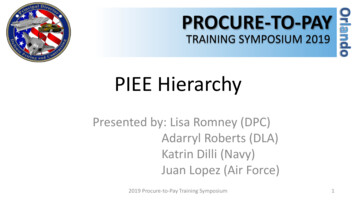
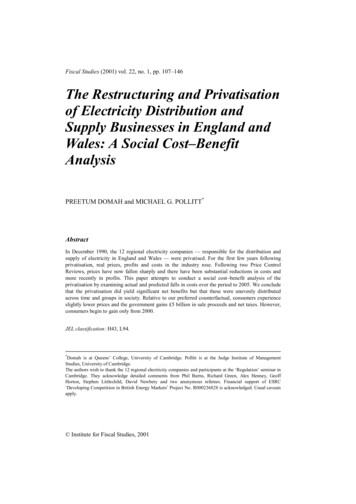


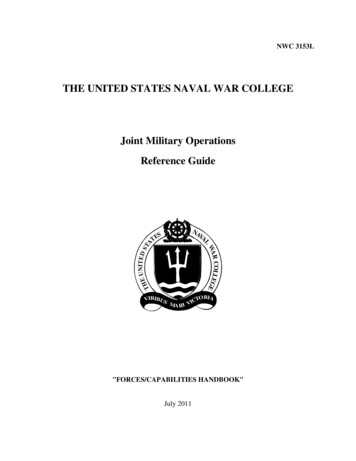
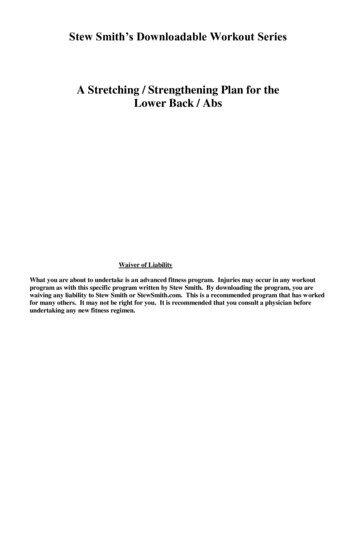

![History of Electronics electricity [Read-Only]](/img/18/history-20of-20electronics-20-20electricity.jpg)

